Different Types Of Trees Drawing
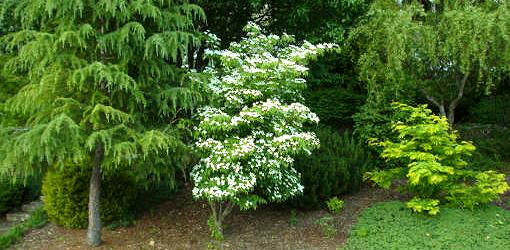
When choosing trees to plant in your yard, it's important to pick ones whose shape fits in with your overall design. For example, if you want something tall and thin, you'll be much more successful if you choose a tree that naturally grows in a tall columnar shape, rather than trying to keep a wide, sprawling tree pruned into submission.
Since every tree is different, naming the shapes is something less than an exact science, but in general they tend to fall into categories. The following is a guide to the basic shapes of common landscape trees:
Columnar Shaped Trees

Columnar trees are tall and very thin, with upright branches. Their vertical shape adds height and also provides great screening without taking up much room in the landscape.
Examples: Italian cypress, Lombardy poplar, pyramid oak, Emerald Green arborvitae.
Pyramidal or Conical Shaped Trees
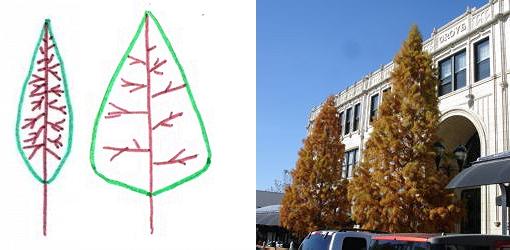
We often think of Christmas trees as the classic pyramidal tree, but the shape applies to deciduous trees as well. Pyramidal trees are wider at the bottom, with a main center trunk and horizontal branches. The branches may start at ground level or higher up the trunk. Conical trees are similar but are usually more slender and bullet-shaped. These trees are very dramatic and need space to reach their full width.
Examples: blue spruce, Fraser fir, pin oak, western red cedar.
Vase Shaped Trees
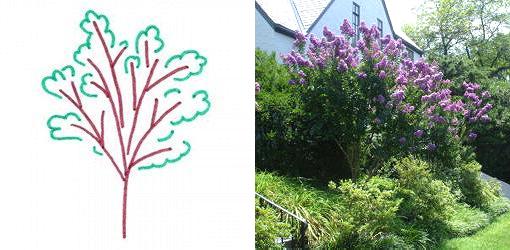
Vase shaped trees are just what they sound like: a central trunk that branches into an upright, arching shape that's widest at the top. Vase-shaped trees are graceful and perfect for lining walkways, because they offer both shade and headroom.
Examples: crape myrtle, American elm, Kwanzan cherry.
Round or Oval Shaped Trees
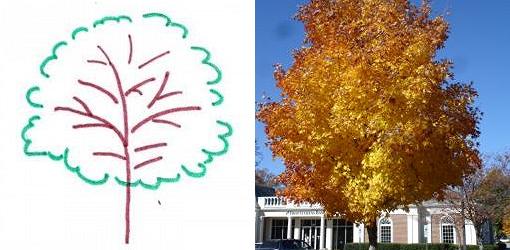
These trees are upright, with a central strong trunk that branches into a dense round or oval-shaped crown. They make strong shade and may have such dense foliage that the branches are concealed.
Examples: sugar maple, Bradford pear, white ash, sourwood.
Spreading or Open Shaped Trees
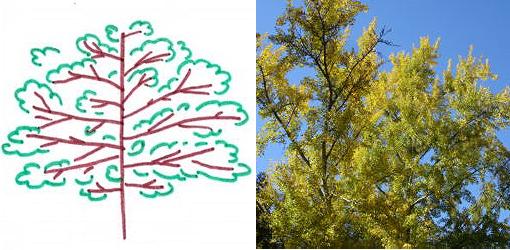
These trees have an open, irregular shape that may be wider than it is tall. Some are towering skyline trees, and others are smaller, bushy specimen trees. They generally make dappled shade and are great for softening buildings.
Examples: cherry, dogwood, ginkgo, mimosa.
Weeping Shaped Trees

Weeping trees have flexible, long branches that hang down and may even touch the ground. The shape of these trees is often irregular and dramatic, making them an excellent specimen or accent tree. Weeping trees should not be planted near walkways or streets where the hanging branches would get in the way or need to be pruned.
Examples: weeping willow, weeping cherry, weeping mulberry.
Umbrella Shaped Trees
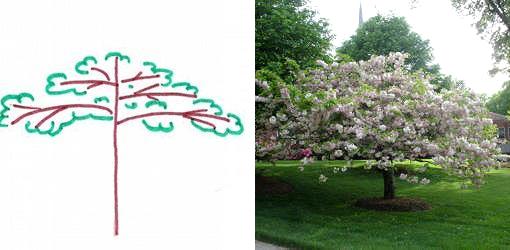
Umbrella-shaped trees have fairly high branches that spread wide to make an umbrella canopy. If the branches are high enough, these trees are perfect for shading sitting areas or patios, because they naturally leave a clear view underneath.
Examples: flowering cherries, acacia, cutleaf Japanese maple, palo verde.
Further Information
- Five Must-Have Trees for Fall Foliage (article)
- What to Look for When Choosing a Tree for Your Yard (video)
- How to Select the Right Tree for Your Yard (article)
- How to Choose a Tree for Your Yard (video)
Different Types Of Trees Drawing
Source: https://todayshomeowner.com/guide-to-different-tree-shapes-for-your-yard/
Posted by: hamiltonwathre.blogspot.com



0 Response to "Different Types Of Trees Drawing"
Post a Comment